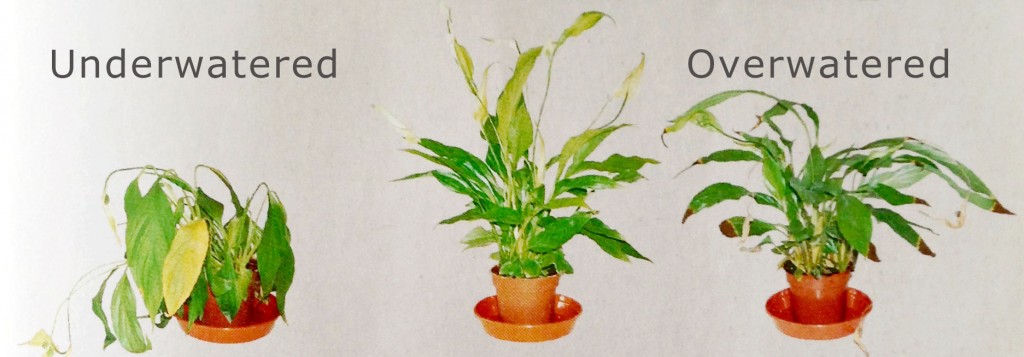 How can you tell if you are watering too much? Check for these tell-tale signs.
How can you tell if you are watering too much? Check for these tell-tale signs.
- Roots are stunted or rotting. When the soil is soaked, roots can’t get enough oxygen and start to die. (Agriox adds oxygen to soil in other conditions where watering less does not correct the problem or is not the cause for the lack of oxygen in the soil. Learn more www.Agriox.com)
- Plant is wilting. It cannot absorb moisture with dying roots. When you see this symptom, check how wet the soil is to know if the plant has too much or not enough water.
- Plant stopped growing, because it can’t get moisture or nutrients from the soil.
- Yellow leaves grow on the plant. This process starts from the bottom of the plant.
- Gray mold appears on the plant. Fungi love to grow where there is moisture. Fungus is likely attacking the overwatered plant.
- Soil is greenish in color. Algae are growing on the surface of the soil. They are harmless, but indicate over watering.
- Stem is soft and mushy – that means it has started to rot.
- Soggy soil. Of course!
How can you save those plants?
- Water correctly. (Need help getting water to move through the soil profile? www.soilsurfactants.com)
- Cut off rotten, damaged roots and plant in fresh soil. (if a potted plant, for example)
- Mold should disappear in a few days of proper watering, and if not, you may choose to apply fungicide to save the plant. (Looking for organic fungicide options? Here is one tip from a client: Use copper, perhaps scraps of eletcrical wire with the plastic trimmed off, and place it around the soil so rain washes over the copper and into the soil and plant roots.)
- If the stem is rotting (soft and mushy), it is too late to save it if it’s an annual plant. If it’s a perennial plant, you still have a chance. Cut off the healthy parts and plant them to get new plants established.
If it’s not you or your irrigation causing the problems, don’t worry, we have other solutions. www.soilsurfactants.com for various water management conditions and www.Agriox.com to get oxygen into the soil when dealing with various causes of anaerobic conditions.
